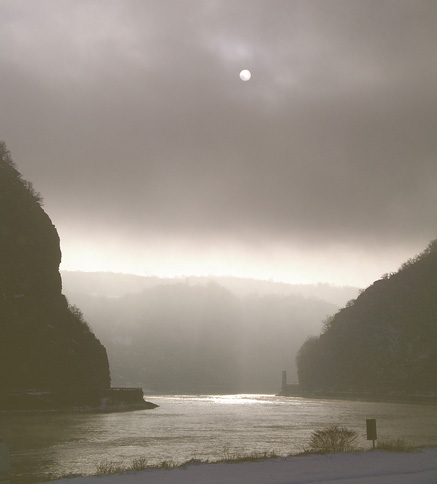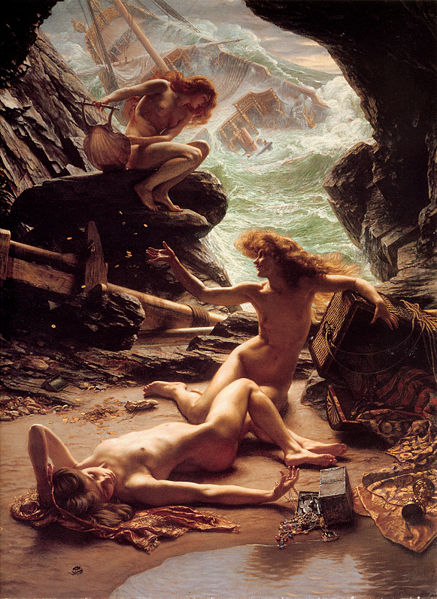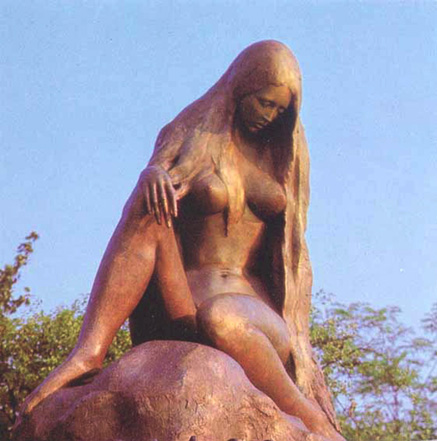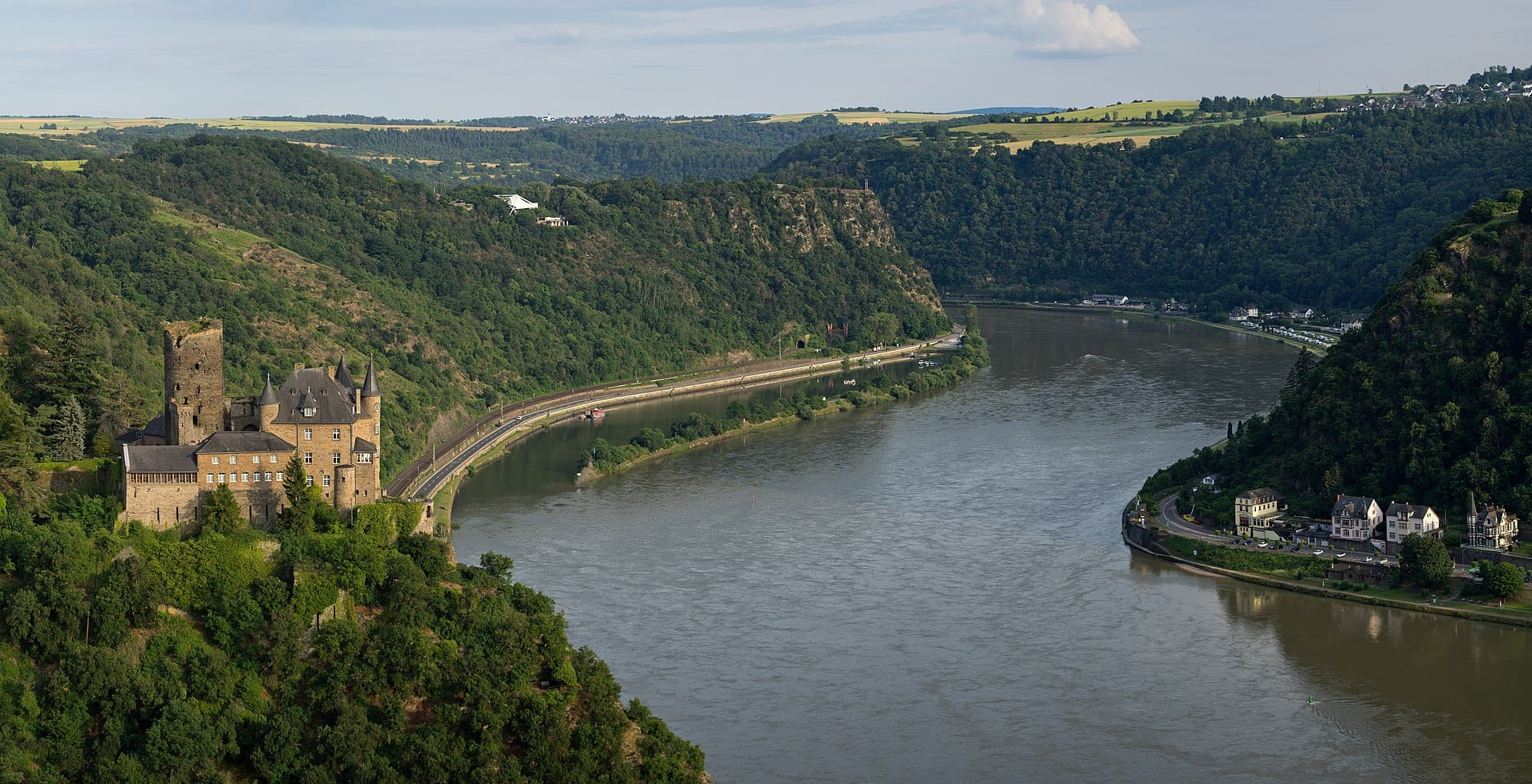Lorelei

The famous German legend of the Lorelei (or Lorelay) is really not that interesting. Neither as a sexual fable nor as a tourist destination. It's just a rock (above).
What is interesting is why these pilgrimage sites lure us there at all. But, with magical and sacred places, timing is everything. The Lorelei Rock sits across the Rhine from Sankt Goarshausen and it looks a lot more mysterious in images like the one below (that’s it on the left side). It has nothing to do with sex or a temptress singing us into the depths and everything to do with a sense of being at a gate between this world and the next.

That seems to be what Heinrich Heine is getting at with his famous poem of the 1820’s, Die Lorelei, which made the Lorelei famous.
Of course, it may have been a sly dig at Goethe’s “Eternal Feminine” (from the end of Faust) or, better yet, it may have been about sex after all, as British painter Edward Poynter suggests, in Cave of the Storm Nymphs (1903), which helps explain what these virgins on the rocks were really after...

The Lorelei rock itself is not that imposing but the Rhine is at its narrowest and swiftest here and it was considered dangerous for shipping until modern times. Down in the river on an island is the gigantic, extravagantly erotic statue of Lorelei herself:

In the best known version of the legend, Clemens Brentano's Loreley falls in love with the Count of Katzenelnbogen, whose castle is shown below. The count marries a girl of noble birth, and Loreley throws herself off the rock in despair. Thereafter she takes her revenge by drowning any men foolish enough to come along the river. That was in 1801. The castle's name today has been shortened to Burg Katz. It has been rebuilt and it is in private hands.
But the story really dates back to the 13th Century, when many believed the treasure of the Nibelungen was buried here at the foot of the Lorelei, guarded by Wagner’s Rhine maidens. These ambiguous creatures were better known as “nixie,” Scandinavian-derived water spirits and they also pop up in the Grimm fairytales.

One of the other interesting water spirits is the Celtic-derived Melusine, whom Martin Luther and Goethe both wrote about (unfavorably) and who inspired Hans Christian Andersen’s The Little Mermaid. But she’s another story… Also see the sirens in the Odyssey and Gustav Klimt’s modern mermaids. The luxuriant long hair motif also appears in Lady Godiva.
